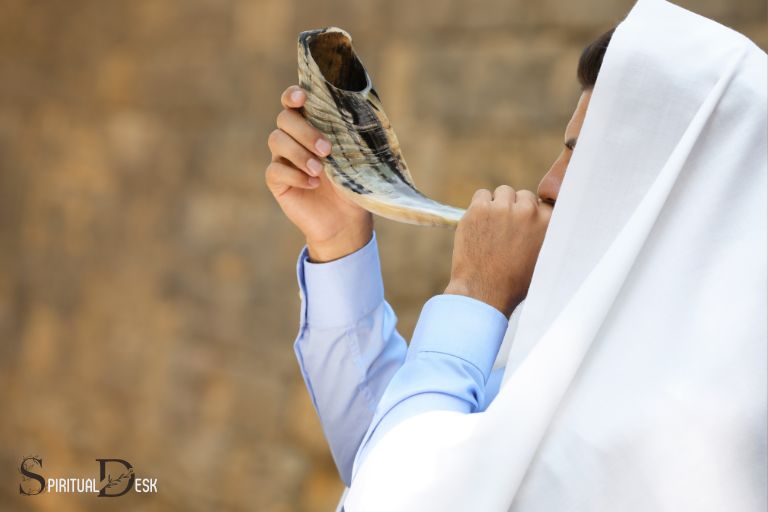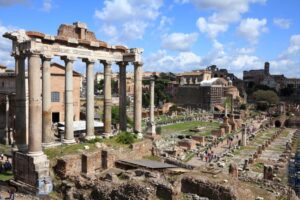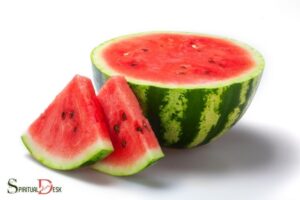What Is The Spiritual Meaning Of Yom Kippur? Atonement!
Yom Kippur, also known as the Day of Atonement, is the holiest day in the Jewish calendar. It is a day for repentance and atonement for sins committed during the past year.
The spiritual meaning of Yom Kippur lies in self-reflection, repentance, and the opportunity for individuals to forgive others, seek forgiveness, and purify their hearts.
Yom Kippur is a day of solemn reflection and prayer, observed with a 25-hour fast and intensive prayer. The day is spent mostly at the synagogue, in prayer and repentance.
The spiritual practices of Yom Kippur aim to cleanse the soul and renew the spirit, allowing individuals to start the new year with a clean slate.
For many Jews, Yom Kippur is a time to confront mistakes made during the past year, seek forgiveness from those they have wronged, and make amends.
It is a day to cleanse the soul and renew one�s relationship with God and others. The solemn nature of Yom Kippur is balanced by the hope and joy of starting the new year with a clean slate.
6 Aspects: Spiritual Meaning Of Yom Kippur
| Aspect | Meaning |
|---|---|
| Origin | Yom Kippur, also known as the Day of Atonement, is the holiest day in the Jewish year. |
| Timing | It’s observed on the 10th day of the Hebrew month of Tishrei, extending from sunset of the previous evening to nightfall of the day. |
| Purpose | The day is devoted to reflection, repentance, and prayer, seeking God’s forgiveness for sins committed over the past year. |
| Traditions | Fasting, prayer, abstaining from physical pleasures, and refraining from work. The Kol Nidre prayer is often recited, and the day concludes with the Ne’ilah service and the sounding of the shofar. |
| Symbolism | Yom Kippur symbolizes purification, reconciliation with God, and a fresh start. |
| Biblical Roots | Stems from Leviticus 16, where once a year, the High Priest would enter the Holy of Holies in the temple to make atonement for the Israelites’ sins. |
Key Takeaway

Five Facts About: the Spiritual Meaning of Yom Kippur
The Origins And Key Components Of Yom Kippur
Yom kippur, also known as the day of atonement, holds great significance in the jewish faith. It is considered the holiest day of the year, a time for fasting, prayer, and repentance. Let’s explore the historical background and key components of yom kippur.
Historical Background And Significance Of Yom Kippur
- Yom kippur dates back to biblical times, as it is mentioned in leviticus 16: 29-31. It was established as a day of reconciliation with god.
- The main purpose of yom kippur is to seek forgiveness for sins committed against god and others. It is believed that on this day, god inscribes people’s names in the book of life, sealing their fate for the coming year.
- Yom kippur is rooted in the story of moses and the israelites’ journey through the desert. After the israelites sinned by creating the golden calf, moses went up to mount sinai to receive the second set of tablets containing the ten commandments. He returned on the tenth day of tishrei, which became known as yom kippur.
- The historical significance of yom kippur is deeply tied to the theme of repentance, reflection, and seeking forgiveness. It serves as an opportunity to make amends, both with oneself and with others.
Observance And Practices During Yom Kippur
- Yom kippur is observed by a day-long fast, starting at sundown the evening before and ending at nightfall the following day. This fasting represents self-denial and acts as a reminder of the importance of spiritual reflection.
- Another key component of yom kippur is prayer. Synagogues hold special services throughout the day, including the kol nidre service on the eve of yom kippur and the neilah service, which marks the closing of the holiday.
- Symbolic acts play a role during yom kippur as well. One common practice is the recitation of the viduy, a confessional prayer where individuals express remorse for their sins. Additionally, the tradition of kaparot involves swinging a live chicken or a bag of coins over one’s head, symbolizing the transfer of sins to another being.
- Certain rituals are performed to create a sacred and solemn atmosphere during yom kippur. This includes wearing white clothing, refraining from wearing leather shoes, and abstaining from activities that bring pleasure, such as bathing and wearing perfume or lotions.
- Community and family play an important role on yom kippur. It is customary to gather together for the various prayers and meals, fostering a sense of unity and support. It is also a time to reconcile with family and friends, seeking forgiveness for any wrongdoings.
Yom kippur embodies the ideals of introspection, forgiveness, and renewal. It is a time for jews worldwide to come together in prayer and reflection, seeking forgiveness from god and others.
By understanding its historical background and observing its key components, individuals can experience the spiritual meaning of yom kippur in a profound and meaningful way.
Teshuvah: Seeking Inner Change And Self-Reflection
Teshuvah is a central concept in the observance of yom kippur, the day of atonement for the jewish community. It is a time of introspection, repentance, and renewal, as individuals seek to mend their ways and reconnect with their spirituality.
Let’s explore the concept of teshuvah and the rituals and practices associated with this essential aspect of yom kippur.
Exploring The Concept Of Teshuvah
Teshuvah, which translates to “repentance,” is not merely about feeling remorse for past actions. It is a process that involves sincere self-reflection and a genuine commitment to change for the better.
Here are some key points to consider regarding teshuvah:
- Recognition of wrongdoing: Teshuvah starts with acknowledging our mistakes and taking responsibility for our actions. It requires a genuine understanding of the harm caused to others and ourselves.
- Sincere regret and remorse: Alongside recognizing our wrongdoings, it is crucial to genuinely feel regret for our actions. This emotional component drives us to seek forgiveness and make amends.
- Resolving to change: Teshuvah involves a firm commitment to personal growth and moral transformation. It requires introspection and identification of areas where improvement is needed.
- Seeking forgiveness: In the process of teshuvah, it is essential to take proactive steps toward seeking forgiveness from those we have wronged. This may involve acknowledging our mistakes, apologizing sincerely, and making amends, whenever possible.
- Accountability and restitution: Teshuvah encourages taking responsibility for our actions by making appropriate restitution. This may involve rectifying the harm caused, both in material and emotional terms.
Rituals And Practices Related To Repentance
Yom kippur is a day filled with rituals and practices that symbolize repentance and the aspiration for spiritual renewal.
Some of the rituals associated with teshuvah on yom kippur include:
Fasting: Fasting for the duration of yom kippur, from sundown to sundown, is a way of demonstrating one’s commitment to the process of repentance and self-reflection.
By refraining from physical nourishment, individuals are better able to focus on their spiritual well-being.
Prayer and introspection: Yom kippur is a day dedicated to prayer and deep introspection. It provides an opportunity to connect with one’s inner self, seek forgiveness from a higher power, and reflect on the past year’s actions.
Confession: During yom kippur, a special prayer called the vidui is recited. This prayer is a communal acknowledgment of sins and transgressions committed, both individually and collectively. It serves as a reminder of the need for repentance and atonement.
Acts of kindness and charity: Engaging in acts of kindness and charity is another integral part of teshuvah on yom kippur.
By helping others and demonstrating generosity, individuals not only make amends for past wrongs but also strive to become better versions of themselves.
Immersion in water: Some jewish communities practice a symbolic act of purification known as tashlich.
In this ritual, individuals gather near a body of water and symbolically cast away their sins by tossing small pieces of bread into the water. This act represents letting go of wrongdoings and starting anew.
As yom kippur approaches, it is important to remember that teshuvah is a deeply personal and transformative process.
By engaging in self-reflection, seeking forgiveness, and committing to change, individuals can experience the spiritual growth and renewal that yom kippur offers.
Atonement: Seeking Forgiveness From God And Others
Yom kippur, also known as the day of atonement, holds deep spiritual significance for the jewish community. It is a time of reflection, repentance, and seeking forgiveness.
Let’s delve into the process of atonement during yom kippur and the importance of seeking forgiveness from both god and others.
Understanding The Process Of Atonement During Yom Kippur
- Yom kippur, the holiest day in the jewish calendar, is a time for introspection and repentance.
- The process of atonement begins with acknowledging our mistakes, sins, and transgressions committed throughout the year.
- It involves taking responsibility for our actions and seeking forgiveness from both god and the people we may have hurt.
- The tradition of yom kippur teaches that atonement can only be achieved through sincere remorse, repentance, and making amends.
- The day is marked by fasting, prayer, and abstaining from worldly activities as individuals immerse themselves in the process of seeking forgiveness.
Importance Of Seeking Forgiveness From Others And Making Amends
- Seeking forgiveness from others plays a crucial role in the process of atonement during yom kippur. It is not enough to seek forgiveness from god alone; we must also mend the relationships we have strained or damaged.
- Making amends with those we have wronged allows for healing and reconciliation, fostering a sense of unity and harmony within our communities.
- It requires genuine humility and vulnerability to approach others and ask for forgiveness. This act demonstrates a willingness to acknowledge our faults and the desire to repair the harm we have caused.
- By seeking forgiveness and making amends, we create space for healing and growth, allowing relationships to be restored and strengthened.
- Yom kippur reminds us that our actions have consequences, and seeking forgiveness from others is essential for our own personal growth and spiritual well-being.
As we engage in the process of atonement during yom kippur, let us embrace the opportunity to reflect upon our actions, seek forgiveness from both god and others, and take the necessary steps to make amends.
This sacred day offers us a chance for introspection, forgiveness, and renewal, allowing us to strengthen our spiritual connection and forge deeper relationships with those around us.
May the journey of atonement bring us closer to our true selves and the path of righteousness.
Fasting: Detoxifying The Body And Soul
Significance Of Fasting On Yom Kippur
Fasting is an integral part of yom kippur, the holiest day in the jewish calendar. This day of atonement is a time for reflection, repentance, and seeking forgiveness. Fasting holds deep spiritual significance and is seen as a way to purify both the body and soul.
Here’s why fasting on yom kippur is so important:
- Self-denial: By abstaining from food and drink for a full day, individuals demonstrate their commitment to seeking forgiveness and engaging in meaningful introspection. Fasting is an act of self-denial and a symbol of focusing on spiritual matters.
- Cleansing ritual: Fasting on yom kippur is believed to cleanse the body and soul from impurities. It is seen as a way to rid oneself of past sins and start afresh. The physical act of fasting is a powerful reminder of the need for spiritual purification.
- Atonement: Yom kippur is a time for repentance and seeking atonement for one’s sins. Fasting is considered a way to humble oneself before god and seek forgiveness. By abstaining from food and drink, individuals express their sincere desire to make amends and be reconciled.
Spiritual And Physical Benefits Of Fasting
Fasting on yom kippur not only has spiritual significance but also offers several benefits for the mind, body, and soul.
Let’s explore how fasting can positively impact us:
- Heightened spiritual awareness: Fasting allows individuals to remove distractions and focus inward. It fosters a heightened sense of spiritual awareness and connection with god. By eliminating the physical need for sustenance, the mind is freed to engage in deeper contemplation.
- Reflection and self-growth: The absence of food and drink prompts introspection, leading to increased self-awareness and personal growth. Fasting provides an opportunity to reflect on one’s actions, evaluate priorities, and make positive changes.
- Detoxification: Fasting gives the body a break from digesting and processing food, allowing it to focus on detoxification and healing. During the day of fasting, the body enters a natural cleansing process, eliminating toxins and promoting overall well-being.
- Strengthened self-discipline: Observing a full day of fasting requires significant self-discipline. By exercising self-control, individuals develop a stronger sense of willpower and determination, which can positively impact various areas of life beyond yom kippur.
- Empathy and solidarity: Fasting together with the community fosters a sense of empathy and solidarity. The shared experience of abstaining from food and drink creates a bond of unity and reminds individuals of the interconnectedness of humanity.
As we observe yom kippur and partake in the act of fasting, we embrace the profound spiritual meaning it holds. Fasting becomes a powerful tool in our journey of self-reflection, self-improvement, and seeking forgiveness.
May this day of atonement bring us closer to our spiritual aspirations and lead us on a path of renewal and growth.
Mikveh: Immersing In The Sacred Waters
Yom kippur is a significant day in judaism as it is a time for reflection, repentance, and spiritual cleansing. One of the rituals associated with this holy day is the immersion in the mikveh, also known as a ritual bath.
Understanding the ritual of immersion in the mikveh and the symbolism and spiritual cleansing associated with it can provide deeper insight into the spiritual meaning of yom kippur.
Understanding The Ritual Of Immersion In The Mikveh:
- Jews traditionally immerse in the mikveh as a way to purify themselves before important events or milestones in their lives.
- The mikveh is a body of naturally collected water, such as a river, ocean, or spring, or a specially constructed pool that meets specific requirements.
- Mikveh immersion involves fully submerging oneself in the water, usually three times, while reciting a blessing.
- The act of immersion serves to symbolically separate oneself from their previous state and enter into a renewed spiritual state.
Symbolism And Spiritual Cleansing Associated With The Mikveh:
- The mikveh represents a spiritual womb, where individuals can emerge purified and reborn.
- Immersion in the mikveh is seen as a metaphorical death and resurrection, allowing for spiritual transformation and growth.
- The water of the mikveh is believed to have the power to purify and remove impurities, symbolizing a fresh start and a cleansing of the soul.
- The act of immersion also signifies a commitment to leaving behind past mistakes, seeking forgiveness, and pursuing a path of righteousness.
- The mikveh can bring a sense of spiritual renewal, a chance to shed negative energies, and open oneself to new possibilities.
The tradition of immersing in the mikveh during yom kippur holds profound spiritual meaning in judaism. It serves as a powerful symbol of purification, transformation, and the opportunity for individuals to start anew.
The act of immersing in the sacred waters of the mikveh not only cleanses the body but also purifies the soul, allowing individuals to reflect, repent, and embrace a renewed spiritual journey.
Prayer And Meditation: Seeking Divine Guidance And Blessings
Practices of prayer and meditation during yom kippur:
Connecting with the divine: Yom kippur, also known as the day of atonement, is a solemn day of reflection and repentance in the jewish faith.
It is a time when individuals seek forgiveness and strive to strengthen their connection with god. Prayer and meditation play a significant role in this process.
Communal prayers: Yom kippur is marked by communal prayers which are recited in synagogues around the world. These prayers, known as the high holiday liturgy, are designed to facilitate introspection, repentance, and a sense of collective responsibility.
Congregants come together to seek forgiveness, express gratitude, and ask for divine guidance and blessings.
Personal prayers: In addition to communal prayers, individuals also engage in personal prayers during yom kippur. This is a time for deep introspection and personal reflection.
Many people use this opportunity to seek forgiveness, express gratitude, and ask for blessings for themselves and their loved ones. Personal prayers can be done both in the synagogue and at home.
Meditative practices: Meditation is another essential component of yom kippur. The purpose of meditation during this holy day is to cultivate mindfulness, attain spiritual clarity, and create a space for personal growth.
Some individuals choose to meditate in silence, focusing on their breath or a specific mantra, while others may engage in guided meditation or visualization exercises.
Self-reflection: Yom kippur encourages introspection and self-evaluation. It is a time to assess one’s actions, behaviors, and relationships over the past year.
Through prayer and meditation, individuals seek divine guidance to better understand themselves and make amends for any wrongdoings. The goal is to achieve spiritual growth, personal transformation, and ultimately, draw closer to god.
Seeking forgiveness and atonement: Yom kippur provides an opportunity for repentance and seeking forgiveness from both god and fellow human beings.
Prayer and meditation help individuals express remorse, ask for forgiveness, and commit to making positive changes in their lives. This process of atonement allows for spiritual healing and the restoration of relationships.
Renewed spiritual connection: By actively engaging in prayer and meditation on yom kippur, individuals aim to strengthen their bond with god and their spiritual connection.
The day serves as a reminder to prioritize religious devotion, deepen one’s faith, and seek a renewed sense of purpose and meaning in life.
Through these practices, individuals hope to experience spiritual enlightenment and find solace in their relationship with the divine.
Prayer and meditation are integral aspects of yom kippur, enabling individuals to seek divine guidance, find forgiveness, and foster a deeper spiritual connection.
These practices facilitate self-reflection, repentance, and personal growth, paving the way for a renewed sense of purpose and a strengthened bond with god.
Synagogue Services: Uniting In Worship And Reflection
In the midst of the sacred jewish holiday yom kippur, synagogue services play a significant role in bringing the community together for worship and deep introspection.
These services provide an opportunity for reflection, repentance, and seeking solace in the presence of a higher power.
Let’s delve into the different parts of the yom kippur synagogue services and discover the spiritual significance they hold.
Exploring The Different Parts Of The Yom Kippur Synagogue Services:
Kol Nidre: A Soul-Stirring Prelude
- Kol nidre serves as the opening prayer of yom kippur, setting the tone for the day.
- This prayer, chanted in haunting melody, symbolizes the solemn commitment to fulfill vows made to oneself and to god.
- By reciting kol nidre, individuals seek forgiveness for unkept promises, allowing for a fresh start on this sacred day of atonement.
The Morning Service: Communal Reflection
- The morning service begins with uplifting blessings and songs, inviting worshippers to tap into the collective energy of the community.
- The recitation of the amidah, the central prayer of the jewish liturgy, enables personal reflection and connection with the divine.
- Congregants also engage with the torah, hearing scripture readings that speak to themes of repentance, forgiveness, and redemption.
Yizkor: Remembering The Departed
- Yizkor, meaning “remember” in hebrew, is a poignant memorial service held on yom kippur to honor departed loved ones.
- During this deeply meaningful moment, individuals recite prayers that commemorate the souls of their relatives, embracing their memories and cherishing the legacies they left behind.
- Yizkor provides an opportunity for healing, while also serving as a reminder of the transient nature of life and the importance of cherishing our time together.
Mincha: Seeking Forgiveness And Renewal
- Mincha, the afternoon prayer service, encompasses themes of reconciliation, repentance, and renewal.
- Through introspective prayers and poetic passages, individuals express remorse for their actions and strive to reconcile with both humanity and the divine.
- The liturgical readings during mincha emphasize the significance of change and commitment to leading a more virtuous life.
Neilah: The Gateway To Spiritual Transformation
- Neilah, translating to “closing,” marks the final moments of yom kippur and is considered the most vital prayer of the day.
- During neilah, the synagogue’s doors symbolize heaven’s gates gradually closing, urging individuals to seize the remaining time for repentance.
- By passionately reciting prayers, the community seeks forgiveness, spiritual transformation, and the blessing of a fresh start as yom kippur draws to a close.
Finding Solace And Renewal Through Communal Worship:
The synagogue services of yom kippur provide a sacred space for worshippers to unite, reflect, and seek solace in their faith.
From the soul-stirring kol nidre to the powerful culmination of neilah, each part of the yom kippur synagogue service invites individuals to embark on a personal journey of repentance, forgiveness, and spiritual transformation.
Together, the community finds strength, support, and renewal in their shared devotion, allowing them to emerge from yom kippur with a rejuvenated spirit and a deeper connection with their faith.
Embracing The Transformative Power Of Yom Kippur
Reflecting On Personal Growth And Spiritual Transformation
Yom kippur, also known as the day of atonement, is a sacred and solemn day in the jewish faith. It is a time for reflection, repentance, and forgiveness.
The spiritual meaning of yom kippur goes beyond just observing rituals and prayers. It calls for embracing the transformative power that this day holds.
Here are some key points to consider:
Self-reflection: Yom kippur is an opportunity to look inward and reflect on our actions, behavior, and choices. It is a time to assess our strengths and weaknesses, acknowledging the areas where we may have fallen short.
Through self-reflection, we can gain a deeper understanding of ourselves and our relationships with others.
Repentance and forgiveness: Yom kippur encourages individuals to take responsibility for their actions and seek forgiveness for any harm caused to others. It is a day to make amends and reconcile with those we may have wronged.
By seeking forgiveness and offering forgiveness to others, we can experience a spiritual transformation and find inner peace.
Letting go of past mistakes: Yom kippur provides an opportunity to let go of the burdens of guilt and regret. It allows us to release negative emotions tied to past mistakes and failures.
By doing so, we free ourselves from the weight of the past, paving the way for personal growth and renewal.
Setting new intentions: Yom kippur is not only about reflecting on the past but also about setting intentions for the future. It is a time to identify areas in our lives that require improvement and make a commitment to positive change.
By setting new intentions, we align our actions and values, leading to personal growth and spiritual transformation.
Carrying The Lessons Of Yom Kippur Into Everyday Life
The significance of yom kippur does not end with the conclusion of the day itself. It is important to carry the lessons learned on this sacred day into our everyday lives.
Here are some ways to integrate the spiritual teachings of yom kippur into our daily existence:
- Practicing forgiveness: Extend the spirit of forgiveness beyond yom kippur by cultivating forgiveness in our interactions with others throughout the year. Let go of grudges, offer understanding, and strive to repair relationships that may have been strained.
- Engaging in acts of kindness: Yom kippur teaches us the value of kindness and compassion. Make a conscious effort to perform acts of kindness on a regular basis. Simple gestures such as helping others, expressing gratitude, and practicing empathy can have a profound impact on our relationships and overall well-being.
- Continuing self-reflection: Maintain the practice of self-reflection beyond yom kippur. Set aside regular time for introspection, journaling, or meditation to stay connected with your inner self. This ongoing self-reflection allows for continued personal growth and self-improvement.
- Living with intention: Apply the concept of setting intentions in your daily life. Identify what truly matters to you and align your actions accordingly. By living with intention, you can create a life that is purposeful, fulfilling, and in harmony with your values.
Yom kippur offers a powerful opportunity for personal growth and spiritual transformation.
By reflecting on our actions, seeking forgiveness, letting go of past mistakes, and carrying the lessons of this holy day into our everyday lives, we can experience profound changes in our inner selves and relationships with others.
Embrace the transformative power of yom kippur and embark on a journey of self-discovery and renewal.
FAQ About What Is The Spiritual Meaning Of Yom Kippur?
What Is The Spiritual Meaning Of Yom Kippur?
Yom kippur is the holiest day of the year in judaism, focusing on repentance and atonement.
Why Do Jewish People Fast On Yom Kippur?
Fasting on yom kippur is a way for jewish people to demonstrate their repentance and spiritual purification.
How Long Does The Yom Kippur Fast Last?
The yom kippur fast begins at sundown and lasts until the following evening, totaling around 25 hours.
What Is Kol Nidre In Yom Kippur?
Kol nidre is a prayer recited at the beginning of yom kippur, symbolizing the importance of keeping vows and promises.
Can You Work On Yom Kippur?
Working on yom kippur is generally discouraged, as it is a day of deep reflection and intense spiritual focus.
Conclusion
Yom kippur, or the day of atonement, holds immense spiritual significance for the jewish community. This holy day is a time of introspection, repentance, and seeking forgiveness from both god and fellow human beings.
The rituals and customs observed during yom kippur provide a deep sense of spiritual cleansing and renewal.
Fasting, prayer, and self-reflection are central to this observance, allowing individuals to turn inward and evaluate their actions and intentions.
This day serves as a reminder of our capacity for growth and change, offering an opportunity to make amends and start afresh.
By embracing the spiritual meaning of yom kippur, individuals are able to let go of past mistakes, seek reconciliation, and strive to live a more meaningful and purposeful life.
The transformative power of this sacred day is a testament to the resilience of the human spirit and its capacity for spiritual growth and renewal.
May the lessons learned during yom kippur pave the way for a year filled with love, forgiveness, and a deeper connection to the divine.
Bonus: What Is The Spiritual Meaning Of Yom Kippur?
What Are The 3 Most Important Components Of Yom Kippur?
There are many different aspects of Yom Kippur, the Jewish Day of Atonement. But three of the most important components are fasting, prayer and repentance.Fasting is an important part of Yom Kippur because it helps to humble oneself before God.
It is also a reminder of how dependent we are on God’s mercy and grace.Prayer is another key element of this holy day. On Yom Kippur, we pray for forgiveness and ask God to help us turn away from our sinful ways.
We also focus on giving thanks for all the good things in our lives.Repentance is perhaps the most essential component of Yom Kippur. This is the time when we reflect on our wrongdoings and pledge to change our ways.
We ask God for forgiveness and promise to do better in the future. By repenting, we hope to earn God’s mercy and grace so that we can be forgiven and start anew.
What Does Kippur Mean In The Bible?
Kippur is the Hebrew word for “atonement.” It appears in the Bible as both a noun and a verb. As a noun, it refers to the day of atonement, when Israelites would offer sacrifices to God to cleanse themselves of their sins.
As a verb, it means to make amends or to reconcile. In Leviticus 16, God instructs Moses on how the Israelites are to observe the day of atonement. On that day, they are to afflict themselves and humble themselves before God.
They are also to bring an offering of blood and sacrifice an animal for their sins. The day of atonement was meant to be a time of repentance and forgiveness. It was a time when people would come before God and ask for His forgiveness.
It was also a time when people would offer sacrifices as an act of worship and obedience to God.
Yom Kippur In The Bible
Yom Kippur is the Jewish Day of Atonement. It is a day when Jews ask forgiveness for their sins and pray for a new year. The holiday falls on the 10th day of the month of Tishrei, which is the first month of the Jewish year.
The word “Yom Kippur” means “day of atonement.” The holiday is also known as the “Sabbath of Sabbaths” and as the “Great Sabbath.” In Leviticus 23:26-32, God tells Moses to have the Israelites observe Yom Kippur as a holy day.
spiritualdesk
On this day, they are to afflict themselves and deny themselves pleasures. They are also to make an offering to God for their sins. On Yom Kippur, Jews fast from sunset to sunset.
They do not eat or drink anything during this time. They also do not wear leather shoes or wash their bodies. This is because they want to show that they are humble and sorry for their sins.
Jews spend Yom Kippur in prayer. They ask God for forgiveness and promise to be better people in the coming year.
How To Pronounce Yom Kippur
In Judaism, Yom Kippur is the holiest day of the year. Its central themes are atonement and repentance. Jewish people believe that on this day they are forgiven for their sins.
Rosh Hashanah, Meaning
Rosh Hashanah is the Jewish New Year. It is a time of introspection and repentance. Jews believe that on Rosh Hashanah, God decides who will live and who will die in the coming year.
This holiday is also known as the Day of Judgment. Rosh Hashanah falls on the first day of Tishrei, which is the seventh month of the Jewish calendar. The word �Rosh� means head, and �Hashanah� means year.
So, Rosh Hashanah literally means �head of the year.� This holiday lasts for two days, and it is customary to eat sweet foods such as apples dipped in honey to symbolize a sweet new year.
When Is Yom Kippur In 2022
Yom Kippur is the holiest day of the year in Judaism. It is a day of fasting, prayer, and repentance. Yom Kippur will be observed on October 9, 2022.
Who Celebrates Yom Kippur
Yom Kippur is the holiest day of the year for Jews. It is a day of fasting, prayer, and repentance. Jews believe that on this day, God forgives their sins and they are cleansed from all their wrongdoing.
Yom Kippur is also a time for introspection and self-improvement. The holiday begins at sundown on the ninth day of Tishrei, which is the first month of the Jewish civil year. (In 2018, that means Yom Kippur starts at sundown on Tuesday, September
18.) The fast lasts for 25 hours, until nightfall on Wednesday, September 19. During this time, Jews refrain from eating or drinking any liquids (even water), smoking, or wearing leather shoes. They also avoid sexual relations and bathing.
Instead, they spend the day in prayer and repentance. One of the most important prayers said during Yom Kippur services is the Kol Nidrei (“All Vows”).
This prayer annuls all personal vows made in the past year that have not been fulfilled – meaning that even if you’ve broken a promise to yourself or others, you are forgiven by God and can start fresh with a clean slate.
After sunset on Yom Kippur eve, families gather together for a festive meal known as seudah hamafseket (“the meal of cessation”). This marks the end of the fast and signals a return to normalcy after the somberness of the holiday.
How Long Is Yom Kippur
Yom Kippur is the most sacred day of the Jewish year. Jews believe that on this day, God inscribes each person’s fate for the coming year into the Book of Life. Yom Kippur, therefore, represents a time of intense introspection and repentance.
The day begins at sundown with a 25-hour fast. During this time, Jews attend synagogue services and recite prayers asking forgiveness for their sins. At the end of the fast, they celebrate by breaking their fast with a celebratory meal.
Yom Kippur Food
In Judaism, Yom Kippur is the holiest and most solemn day of the year. It is a day of atonement and forgiveness, and Jews around the world observe it by fasting from dawn to dusk. During this time, no food or water is consumed.
However, before the fast begins, Jews traditionally eat a hearty meal known as seudat mafseket (literally “table of cessation”). This meal is meant to provide energy and sustenance for the long day ahead.
There are no set rules about what to eat for seudat mafseket, but many people opt for dishes that are rich in protein and carbohydrates.
Common choices include cholent (a stew made with beef or chicken), kugel (a casserole made with egg noodles), and gefilte fish (stuffed fish balls).
After the sun goes down and the fast is over, Jews break their fast with a celebratory meal known as seudat ha-ne’ilah (“the concluding feast”).
This feast typically features more lavish fare than seudat mafseket, including roast chicken or turkey, challah bread, and sweet desserts like kreplach (fried dumplings) or bimuelos (fried dough balls).
No matter what foods are served during seudat mafseket and seudat ha-ne’ilah, they all come with one important ingredient: blessings from loved ones who wish you an easy fast, and a happy New Year.
Yom Kippur Symbols
The Jewish holiday of Yom Kippur, also known as the Day of Atonement, is the holiest day of the year in Judaism. It is a day of fasting, prayer, and repentance. Jews believe that on this day, God forgives the sins of those who repent and ask for forgiveness.
One of the most important symbols of Yom Kippur is the white Kittel. The Kittel is a white robe worn by many Jews on special occasions such as weddings and funerals. On Yom Kippur, it symbolizes purity and innocence.
Another important symbol is the shofar, a ram’s horn that is blown during services on Rosh Hashanah (the Jewish New Year) and Yom Kippur.
The sound of the shofar is meant to awaken people from their spiritual slumber and remind them to repent for their sins.
Other common symbols associated with Yom Kippur include candles (which are lit during services), lulavs (palm fronds used during Sukkot), etrogs (citrons used during Sukkot), and challah bread (eaten at festive meals).






